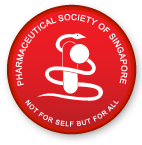Ever since the great industrial revolution, the curiosity and pursuit for better life has driven scientists to discover and invent amazing new things.

Many of these inventions have benefited life tremendously, some averted epidemic at global scale – eg. smallpox vaccine, polio vaccine; some were able to predict natural disasters before they wreak havocs – eg. satellites which predict weather and climate changes.
With such significant new inventions, they wouldn’t have benefited mankind had they not been effectively communicated to the world, then there must be efficient transportation system, storage system, distribution system etc. to match the supply right where the demand was. With that, other complementary supports and enabling technologies blossomed, many of which were hastily put together in the laboratories and adopted.
If we take the vaccines as an illustration, there were mounting challenges stacked ahead to bring the supply to meet the demand – anything that ranged from efficient production capabilities, to effective land, sea and air transportation tools and infrastructure, then there must be temperature-control system and cold-chain capabilities to ensure thermolabile vaccines arrived their intended destinations without unacceptable qualitative changes. With that, came the then “best” building materials which used asbestos; the “best” machineries that ran on either coal or fuel with lead added; and the “best” refrigerant used were predominantly CFC compounds; and the “best” thermal insulation materials were often polystyrene foam etc.
Decades after leaving the labs and finding their way in our globally interconnected world, scientists now accumulated enough evidence to link those “best” materials to the harms they have caused to health and environment. We are often wiser in hindsight and find it easier to blame our predecessors for the mis-steps they have taken; but given the available scientific evidence, the imperatives of the circumstances and coupled with the lack of legal framework, it all seemed logical then. Nowadays, we inherited workers with asbestosis, people grown up with blood and brain disorders due to high lead contents in their body; increased cases of melanomas, cataracts and other diseases associated with excessive exposure to UV as a result of destruction of stratospheric ozone (which filters UV light) by CFC compounds; the polystyrene is believed to be carcinogenic and poses significant environmental and fire hazards.

Science, business and laws are all intertwined, more so in today’s globalized economies. Business needs science and science needs business; laws tend to be reactive and have considerable lag period; often after a major issue, accident or solid body of evidence. Within the pharmaceutical industry, despite the long conception period needed from lab to end users, the system is by no means enough – drugs approved in the labs and trials can face uncertain future, even discontinued ultimately when they are used in the larger global market at commercial scale. It’s probably not possible to have a completely safe drug or product, but certainly the least we need is integrity and accountability, ie. we need responsible scientists, responsible businessmen and responsible legislators. Then, we can wake up the next day, trusting that our lives and our living environment are in the hands of someone else with integrity and accountability.
Ng Cheng Tiang
PSS President


